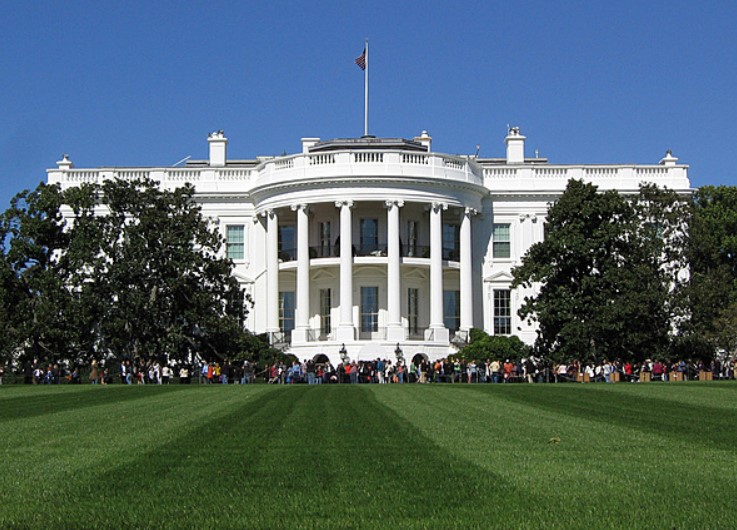
Donald Trump has been sworn in as the 47th President of the United States. He immediately signed dozens of new Executive Actions on Inauguration Day. One key focus of the campaign and looking forward beyond 2025 was sweeping changes to the U.S. energy policy. Trump’s orders signed are intended to help increase production and exporting of oil and gas. This also included the exit from the Paris Accords regarding climate in his America First agenda.
Tactical Bulls has put together many of the top changes which will mark the energy policy differences between Presidents Trump and Biden. These points will show the direct energy policy changes, including some points which were within non-energy executive actions which have overlaps with the energy policies.
Trump’s “Drill baby drill” policy was also reiterated on Inauguration Day. It remains to be seen if oil and gas producers will open the floodgates for more production as of yet. If oil and gas companies overproduce then energy prices head lower if demand does not increase at the same rate as production.
The latest EIA energy outlook (January 14, 2025) shows a global surplus in supply over demand at the current time — as well as rising liquid fuels production and lower oil price expectations for both 2025 and 2026. President Trump has directly tied the inflation of recent years to overspending and escalating energy prices. This was in his pledge to cut energy costs significantly in his first year.
These are many, but certainly not all, of the top changes noted in brief summary seen directly from the executive actions that Trump has signed since his inauguration. These are in no way the only instances of energy (oil, gas and others) within those policies and there are some overlaps within the dozens of orders. Links to some executive actions have been provided for further and more detailed inspection.
Declared a National Energy Emergency to end inadequate and intermittent energy supplies and an unreliable grid that threaten national security.
Unleashing American Energy — to encourage energy exploration and production on federal lands and waters, including on the Outer Continental Shelf. It also included a targeted production for rare earth minerals within non-fuel minerals.
America First in International Environmental Agreements — Withdrawing from the Paris Climate Accord, upon receipt of the notice to withdraw.
Emergency Price Relief and Cost of Living Crisis — includes energy prices, auto choices and appliances.
Executive Order targeting Alaska — reversing Biden’s restrictions on resource development on both State and Federal lands in Alaska.
Revoking and rescinding the U.S. International Climate Finance Plan (immediately).
Ditching the no-gas cooktops, etc. — protecting the freedom to choose goods and appliances (lightbulbs, dishwashers, washing machines, gas stoves, water heaters, toilets, shower heads, and such).
Dropping the Electric Vehicle Mandate — no longer targeting that half of U.S. auto sales are in EVs by 2030.
Revoking Biden’s last ban on drilling in most U.S. Coastal waters.
Reversing the recent pause on new LNG export facilities to boost exports to Europe and key end markets.
Dropping clean energy incentives that were covered in Biden’s Inflation Reduction Act, including a federal funding halt for EV charging stations and ending EV subsidies.
Suspending new and renewal leases for onshore and offshore wind farm projects, including the Offshore Continental Shelf.
Directed heads of federal agencies to identify and exercise lawful emergency authorities “to facilitate the identification, leasing, siting, production, transportation, refining, and generation of domestic energy resources…” and to include federal lands.
ALSO READ: OUTLOOK FOR 2017’s TOP STOCK GAINERS FOR 2025 UNDER TRUMP 2.0
Expediting the Delivery of Energy Infrastructure — to identify and use all relevant lawful emergency and other authorities available to expedite the completion of all authorized and appropriated infrastructure, energy, environmental, and natural resources projects.
Directed agencies to use the emergency Army Corps permitting provisions to facilitate the nation’s energy supply.
Consider updating the U.S. Geological Survey’s list of critical minerals, including for the potential of including uranium.
Accelerate the geologic mapping of the United States on locating previously unknown deposits of critical minerals.
Ensuring that the National Defense Stockpile will provide a robust supply of critical minerals in event of future shortfall (Trump had also noted verbally on Inauguration Day) his intent to fill the Strategic Petroleum Reserve all the way).
On a separate note of the Department of Energy’s Strategic Petroleum Reserve, the current authorized storage capacity is 714 million barrels of total crude oil. The following years and barrels stored will show how the trends were in recent years (in millions of barrels):
- 2018 — 649.139M
- 2019 — 634.967M
- 2020 — 638.086M
- 2021 — 593.682M
- 2022 — 372.030M
- 2023 — 354.684M
- est. end for 2024 (Dec. 26, 2024) — 392M barrels.
If President Trump delivers on filling the SPR to the max, that is 322 million barrels of oil that will have to be purchased over the next four-year period.
This and many other topics will be updated as they change in the days, weeks and months ahead.
Categories: Economy